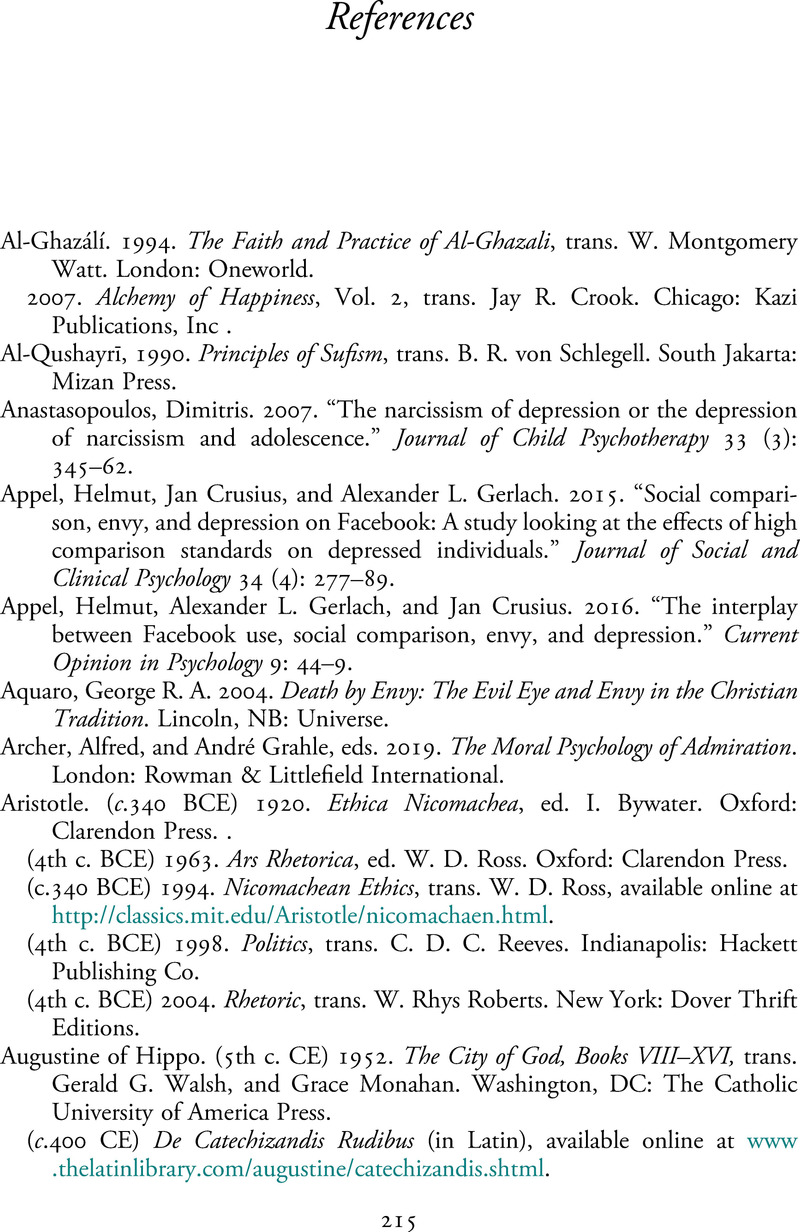Book contents
- The Philosophy of Envy
- The Philosophy of Envy
- Copyright page
- Dedication
- Contents
- Figures
- Tables
- Preface and Acknowledgments
- Introduction
- Chapter 1 What Is Envy?
- Chapter 2 Varieties of Envy
- Chapter 3 The Value of Envy
- Chapter 4 Love and Envy, Two Sides of the Same Coin
- Chapter 5 Political Envy
- Conclusion
- Appendix In the Beginning Was Phthonos: A Short History of Envy
- References
- Index
- References
References
Published online by Cambridge University Press: 01 July 2021
- The Philosophy of Envy
- The Philosophy of Envy
- Copyright page
- Dedication
- Contents
- Figures
- Tables
- Preface and Acknowledgments
- Introduction
- Chapter 1 What Is Envy?
- Chapter 2 Varieties of Envy
- Chapter 3 The Value of Envy
- Chapter 4 Love and Envy, Two Sides of the Same Coin
- Chapter 5 Political Envy
- Conclusion
- Appendix In the Beginning Was Phthonos: A Short History of Envy
- References
- Index
- References
Summary

- Type
- Chapter
- Information
- The Philosophy of Envy , pp. 215 - 233Publisher: Cambridge University PressPrint publication year: 2021



